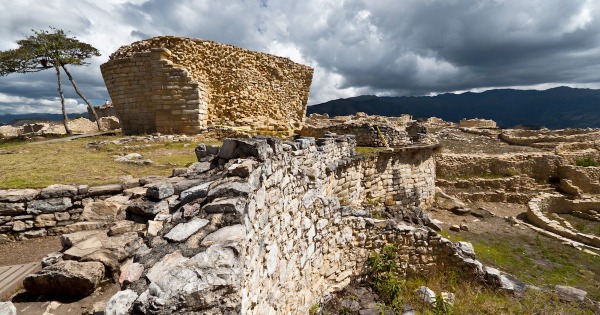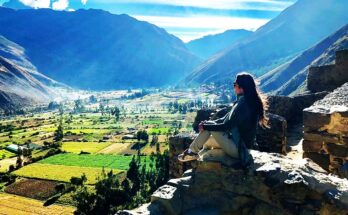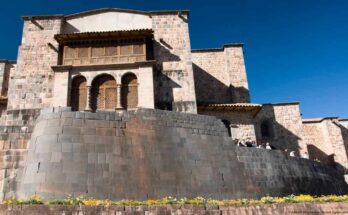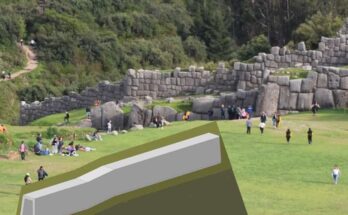The Kuélap Archaeological Monumental Complex, one of the most remarkable tourist gems in the Peruvian jungle, will open its doors to visitors in 2025 with promotional rates for both national and foreign tourists. This initiative aims to promote sustainable tourism in the Amazonas region, allowing more people to discover the legacy of the Chachapoya culture, a fascinating civilization that once flourished in the Andean highlands.
The Ministry of Culture’s Initiative
In an effort to enhance accessibility and foster a deeper understanding of this historic site, the Ministry of Culture has established new pricing for entry to Kuélap. The pricing structure provides specific benefits for students and minors. Additionally, the Ministry has set clear guidelines for access to the site, as well as recommendations on how to reach the area efficiently.
According to the Ministry’s resolution, the new entrance fees to Kuélap are as follows:
- Admission to the Kuélap Archaeological Monumental Complex + Llaqta:
- General Admission: S/ 20.00
- University or technical students: S/ 10.00
- Minors (aged 3 to 17 years): S/ 2.00
- Admission to the Kuélap Archaeological Monumental Complex (without Llaqta):
- General Admission: Free
- University or technical students: Free
- Minors: Free
Required Documents for Admission
To access the Kuélap Archaeological Complex, visitors must present specific documents based on the type of ticket they purchase. The required documents are:
- General Visitors: A valid National Identity Document (DNI), foreigner’s card, or passport.
- Students: A valid student card issued by SUNEDU (National Superintendency of Higher University Education), the Ministry of Education, or the respective educational institution. This card must contain a photograph, personal details, and an expiration date.
- Minors: Minors must be accompanied by an adult responsible for their safety during the visit.
These measures ensure that the site remains accessible and orderly while safeguarding the experience of all visitors.
How to Reach Kuélap from Chachapoyas
Kuélap is located just 38 kilometers from Chachapoyas, the regional capital. The journey involves several stages:
- From Chachapoyas to Nuevo Tingo:
- Depart from the Chachapoyas bus terminal and take a local van to Nuevo Tingo. This trip takes approximately one hour.
- Kuélap Cable Car Station:
- In Nuevo Tingo, visitors must purchase tickets for the cable cars. Payments are accepted only in cash, and the cable car service operates from Tuesday to Sunday, from 8:00 AM to 5:00 PM.
- A shuttle bus will transport visitors from the cable car station to the boarding area, a short 10-minute ride.
- Cable Car Ride to La Malca:
- The cable car ride takes about 20 minutes, covering a distance of 4 kilometers, and leads to the La Malca tourist stop.
- Hike to Kuélap:
- From La Malca, visitors must walk approximately 1 kilometer (about 30 minutes) to reach the archaeological site.
In total, the journey from Chachapoyas to the archaeological complex takes around two hours, although the time may vary depending on the number of visitors and the pace of the hike.
A Sustainable Approach to Tourism
The Ministry of Culture plays a critical role in overseeing the sustainable use of the Kuélap site. Its responsibility includes preserving the cultural heritage, regulating visitor access, and ensuring the site’s conservation for future generations. Through its efforts, the Ministry has promoted the use of the archaeological site in a way that benefits local communities while educating visitors about the importance of preserving Peru’s diverse cultural and historical assets.
One key aspect of this initiative is the promotion of sustainable tourism in the Amazonas region. By offering discounted tickets for students and minors, the Ministry hopes to encourage young people to explore their heritage while simultaneously boosting the local economy. Furthermore, the introduction of cable cars to reduce the environmental impact of the influx of visitors is a strategic move to minimize wear and tear on the site itself.
The promotion of the region’s cultural and natural resources also aligns with Peru’s broader tourism strategy. By increasing the accessibility of historical sites like Kuélap, the Ministry aims to diversify the country’s tourism offerings beyond the well-known Machu Picchu, thereby spreading the economic benefits of tourism across more regions.
Kuélap’s Significance and Future Prospects
Kuélap is an ancient hilltop fortress built by the Chachapoya civilization, known for their intricate stone structures and advanced architectural skills. The site, which dates back to the 6th century, is a testament to the Chachapoya people’s ingenuity and resilience. The complex is a mixture of residential, ceremonial, and defensive structures, surrounded by massive stone walls and impressive carved stones that tell the story of the ancient Andean society.
With its stunning location and historical value, Kuélap is a key destination for both cultural and eco-tourism. Its potential as a UNESCO World Heritage Site highlights the need for preservation, as well as the importance of promoting responsible tourism that respects the integrity of the environment.
Looking ahead, Kuélap is expected to play a pivotal role in the sustainable tourism model of Peru. The government’s initiatives, such as the promotion of affordable ticket prices, are essential in making the site more inclusive. In turn, this will ensure that Kuélap remains a valuable resource for education, tourism, and cultural preservation.
The opening of the Kuélap Archaeological Monumental Complex in 2025 promises to be a defining moment for the Amazonas region and Peru’s tourism sector. With its promotional pricing, clear access guidelines, and commitment to sustainable tourism, Kuélap will not only attract visitors from around the world but also foster a deeper appreciation for the cultural wealth of Peru. As more people discover this fascinating historical site, the legacy of the Chachapoya civilization will continue to thrive, offering a glimpse into the past while shaping the future of responsible tourism in the Peruvian jungle.



